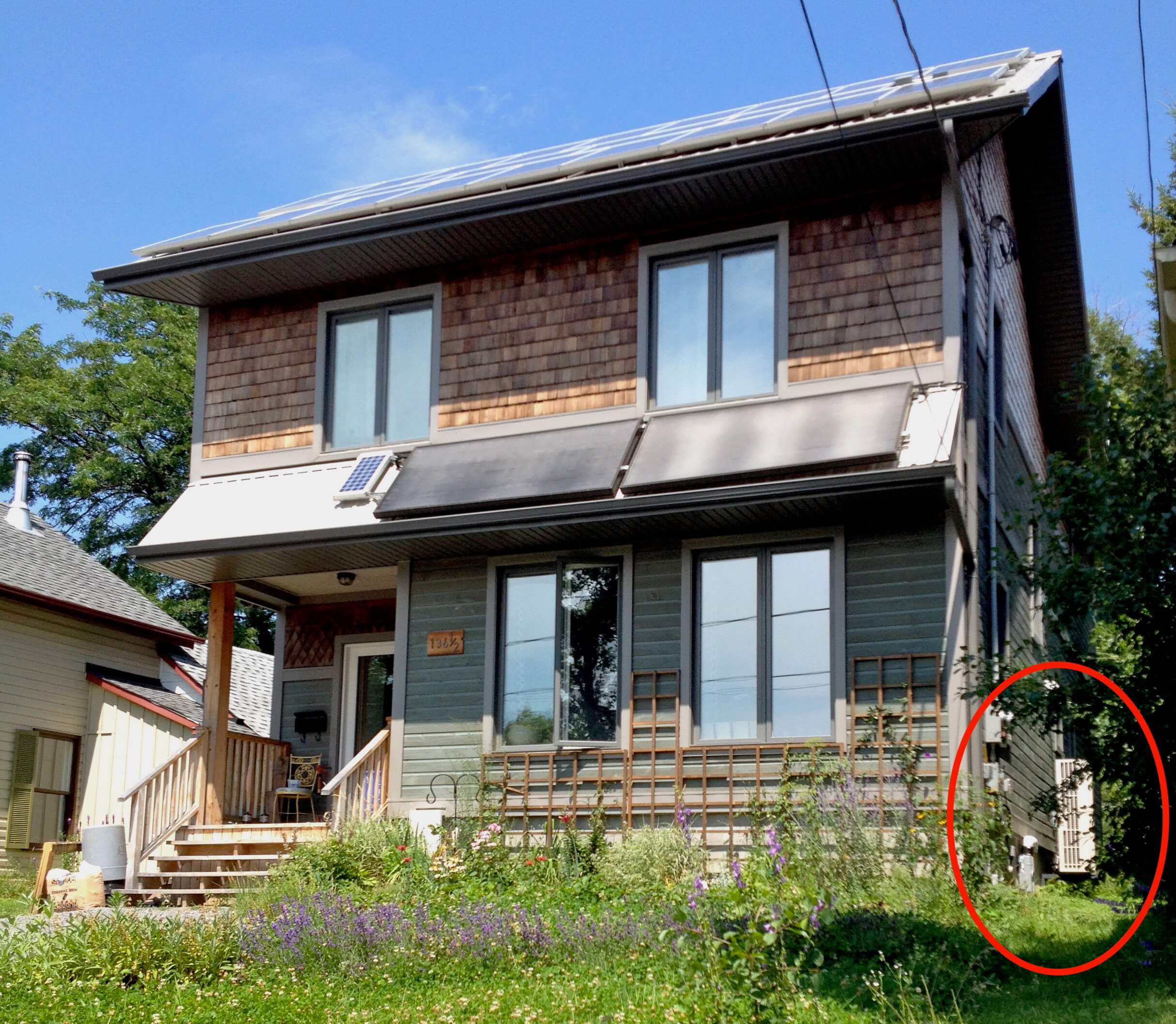Among the many challenges involved in meeting the Living Building Challenge standard for Canada’s Greenest Home, one of the biggest was how to heat the home given that the LBC does not accept combustion devices of any kind for any purpose.
Our first choice for heating this home was going to be a pellet boiler. Impressed with the efficiency and cost of these systems, we were also aware that a number of local pellet making facilities (including one less than 1km away from the home) meant that our fuel supply could be reliable and entirely based on existing waste biomass in the region.
Once we understood that this combustion option was not feasible (and I’m not sure I agree with the LBC’s reasoning on this point), our focus turned to heat pumps, both ground source and air source. Heat pump technology is a great option, as it is the only heating (and cooling) technology that is more than 100% efficient. With combustion devices, for every unit of fuel input there is slightly less than one unit of heat output (hence the ratings that might state efficiencies in the 90% range). With heat pumps, each unit of energy input (electrical energy, used to drive the pump) there is between 1.5 and 5 units of heat created, meaning that efficiencies can be stated in the 150-500% range.
A heat pump works by circulating a refrigerant with a boiling point that is designed to be in the temperature range expected on the outside of the building. By compressing this gas and forcing it into a gaseous state and then allowing it to return to a liquid state, the refrigerant goes through two phase changes. The heat that is transferred during these phase changes is significant, even though the temperature of the refrigerant is not.

The heat pump cycle explained. The important part to know is that the phase change of the refrigerant releases usable heat, even if the actual temperature of the refrigerant is not “hot”. Image from CMHC
This isn’t magic, and it isn’t even a new technology. Your refrigerator is a heat pump, as is your air conditioner. The premise has been around for decades, but has only recently been applied to heating homes on a large scale in the past decade. The use of heat pumps in cold climates has not been feasible until quite recently, when Mitsubishi introduced their Zuba range of cold climate heat pumps. These units are able to make usable heat at temperatures as low as -30C, making them feasible as the sole heat source for a northern climate home as long as the home is made to be energy efficient.
The heat loss calculation for Canada’s Greenest Home was 22,524 Btu/h (British Thermal Units per hour). The Zuba is capable of producing 34,130 Btu/h, so it is well within the unit’s capacity to fully heat this home.
As with all heat pumps, the Zuba can run in reverse and be an efficient air conditioning unit in the summertime.
The Zuba has two components. On the exterior of the house there is the heat pump unit. On the interior of the house there is the heat exchanger and the air plenum plus the fan and switchwork for the system. It is connected to conventional ductwork to supply heated air to the whole house.
The Mitsubishi Zuba units are supplied in Ontario by Mitsair. Our system was installed by Crown Heating in Peterborough. Our thanks to both companies for their professional assistance.
The decision to go with an air source heat pump was made largely based on the cost of installation. While a ground source unit offers better efficiencies (especially at colder outdoor temperatures), the cost of installation is quite a bit higher, and the payback on the additional investment is well over a decade. Given our investment in other technologies for this home, we decided in this case that the lower cost of installation and the very good efficiencies for the unit made it the right decision for Canada’s Greenest Home.


